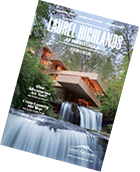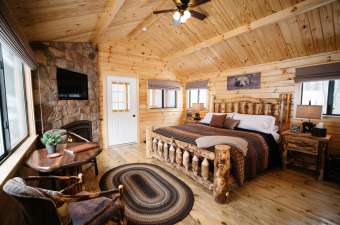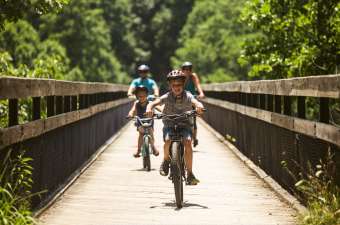Transworld Business: by Jake Black
RESILIENCE IN THE FACE OF A CHANGING CLIMATE: THE IMPACT OF WATER & ENERGY USE IN SNOWMAKING AT U.S. RESORTS
In a world of ever-changing climate and weather volatility, seasons lose their orientation on the map of time. Spring pulls out the umbrella, summer cranks the air conditioning, fall busts out the sweaters, and winter—Winter is expected to crack the whip of wind and brew up the most vicious storms, tossing everything out of the atmospheric kitchen sink. So what does that mean to the resilience of an industry dependent on consistent cold temperatures, flurries from the sky, and mountains covered in white? According to SIA, snow sports sales reached $4.5 billion in the 2014/2015 season—with that much green floating around, a white-less winter could cause catastrophic ‘cha-ching’ collapse. Luckily, a geo-engineered solution to the lack of natural snowfall exists. When it comes to snowmaking, though, state and regional laws come into play depending on where the rain or flakes fall. In Western states, water laws created in the 1800s during the mining boom are still regulated today. For better or for worse, these laws determine who owns the water and how landowners are allowed to use or collect precipitation. To boot, there is a third, often overlooked but necessary ingredient to the snowflake recipe: energy. Snow guns need juice to create blizzards, a task which has its own setbacks. So how do various mountains across the U.S. source and use water to keep chair lifts turning?
SEVEN SPRINGS MOUNTAIN RESORT
Let us take a trip to the East. In the southwestern part of Pennsylvania lies Seven Springs Mountain Resort, with arguably one of the biggest snowmaking systems in the country. The resort’s 300 skiable acres depend on the surrounding townships acreage to contain and collect over 200 million gallons of water in 63 total ponds. Joel Rerko, director of mountain operations, reminisced about mythic water philosophy, claiming that since the introduction of snowmaking to the area old wise men used to say, “If I don’t use every drop of water at least 10 times I feel that it is a failure.” He elaborated on their water-preserving snowmaking system: “New water coming in each year is maybe five percent; the rest of it is reusing the same water.” For a resort that blasts 1,100 snow guns and is able to project ten million gallons of agua in a night, it must be one hell of a system to only lose a small fraction of hydration throughout the year. Seven Springs’ previous owner Herman Dupré had an artistic eye for water use, one could say. Dupré, also co-founder of HKD Snowmakers, created the vision for the immense water collection system. Various streams run throughout the property, and any snow that melts goes straight back into storage. They even have their own sewage treatment plant in which they can use certain percentages of the processed water to make snow. Rainwater is collected from the rooftop gutters and any moisture that hits the parking lots is captured—a practice illegal in many of the Western states. The various collector ponds are strategically located around the base of the resort and pumped up through several series of ponds to the top of the resort, where they can use gravity to help pressurize the water enough to create snow. For the past ten years, water use hasn’t fluctuated much, however, their elevation at just above 3,000 feet requires them to make snow more often due to rains. As Rerko notes, “We get several melt out and thaw cycles where we will go from being 100 percent open to losing 40 to 50 percent of our terrain on a Tuesday because of a heavy rainstorm and fifty-degree weather. So we have to start from scratch with our snowmaking and re-dust our entire mountain.” The resort went as late as the end of March last season making snow; quite different than its western counterparts who commonly stop blowing snow once there is a base and more consistent cold temperatures.
Read more








